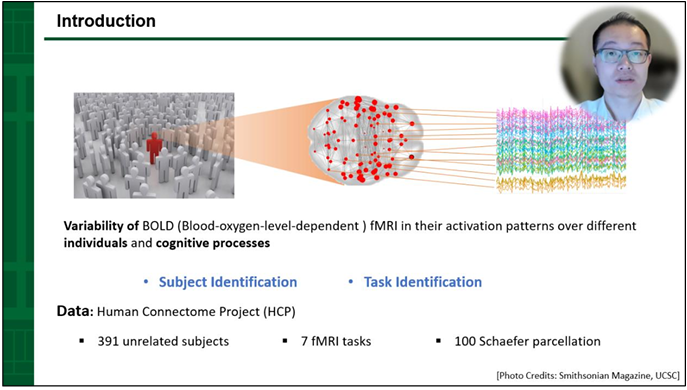Incorporating control-theoretic methods into neuroscientific research was the interest that brought together Xuan Wang, Assistant Professor in Mason’s Electrical and Computer Engineering, and Mainak Patel, Assistant Professor of Mathematics at William and Mary. Supported by a 4-VA grant, the two wanted to look closer at adapting cutting edge technology in functional magnetic resonance imaging (fMRI) to create a new approach to facilitate the prediction and regulation of the firing rate dynamics of brain neurons. The real-world application of this research is to facilitate brain disease treatment, such as epilepsy, and brain-computer interface.
“As a result of this project, we have developed two network models, a firing rate dynamics model describing the microscale neuronal activities of the brain; and another to measure the small changes in blood flow that occur with brain activity,” explains Wang. “We have also created an effective data-driven algorithm that can reconstruct and predict the rate and fMRI dynamics of the brain.”
Wang and Patel received human brain fMRI data from United States Naval Academy through Assistant Professor Duy Duong-Tran and support from Li Shen, Professor of Informatics in Biostatistics and Epidemiology at the University of Pennsylvania.
Results of the research have been publicly shared via two abstracts at the Organization for Human Brain Mapping conference. Follow-up work submitted to the 2024 Medical Image Computing and Computer-Assisted Intervention Conference is currently under review. Another paper on the project was submitted to the Institute of Electrical and Electronics Engineers Transaction on Automatic Control and is currently being considered for publication.
 Graduate student Muhammad Umair (left), who gathered and processed fMRI and firing rate data for the research, won first place at the College of Engineering and Computing Innovation Week at Mason with a poster titled ‘Subject and Task Fingerprint using Dynamic Reconstruction from fMRI Time-series Data’.
Graduate student Muhammad Umair (left), who gathered and processed fMRI and firing rate data for the research, won first place at the College of Engineering and Computing Innovation Week at Mason with a poster titled ‘Subject and Task Fingerprint using Dynamic Reconstruction from fMRI Time-series Data’.
Based on the results of the 4-VA project, Shen, Duong-Tran, and Wang are currently preparing a National Science Foundation grant proposal for more extensive research.
“Thanks to the seed funding from 4-VA, my collaborators were able to jump-start our research. We successfully validated preliminary hypotheses and will now leverage our findings further. Currently, we are in the process of applying for larger grants to sustain and expand our efforts on this topic,” adds Wang.
